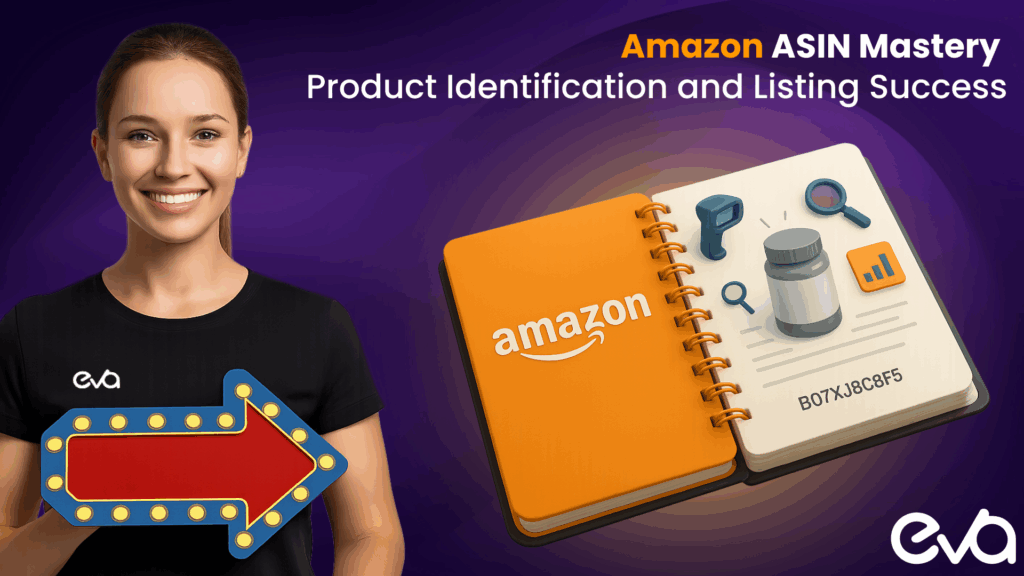Every successful Amazon seller knows that behind every million-dollar product listing lies a simple 10-character code that can make or break your business. Amazon’s Standard Identification Number (ASIN) isn’t just a random string of letters and numbers – it’s the digital DNA of your product that determines everything from search visibility to competitor positioning.
Whether you’re launching your first product or scaling to eight figures, understanding how ASINs work, when to create new ones, and how to leverage them for competitive advantage will directly impact your bottom line.
In this comprehensive guide, we’ll decode the ASIN system that drives Amazon’s $500+ billion marketplace and show you exactly how to use this knowledge to outsmart your competition and maximize your profits.
Table of Contents
- What Is Amazon ASIN?
- How to get an ASIN number from amazon?
- Why Is Amazon ASIN Important?
- Mastering ASIN Lookup and Reverse ASIN Lookup Tools for Competitive Advantage
- The Power of Strategic ASIN Research
- Navigating Multi-Seller Dynamics and Brand Protection Through Amazon Seller Central
- The Critical Importance of Proper ASIN Management
- Brand Registry: Your Competitive Moat
- What Is The ASIN Creation Policy
- What is Amazon’s Product Variation Policy?
- Using an Existing Amazon ASIN
- How to Create A New ASIN in Amazon?
- How to add unique Amazon ASINs with UPCs, ISBNS, GTINs, and EANs?
- FAQ | ASIN Number
- Conclusion
- Introduction To Eva’s Dynamic Pricing Tool
What Is Amazon ASIN?
Amazon ASIN stands for Amazon Standard Identification Number. It is a unique combination of 10 characters: numbers, alphabets, or combinations.
An ASIN functions as an identifier that Amazon.com and its partners assign to a product. Unique ASINs allow sellers and customers to find the exact product they are looking for within the massive product catalog. Therefore, there can never be two items with the same ASIN.
However, there are some exceptions to this uniqueness. For instance, a specific ASIN is unique only within the same marketplace. That means that Amazon sites in the US and Germany may use different ASINs for the same product. If you sell books on Amazon, the ASIN is the same as the ISBN (International Standard Book Number).
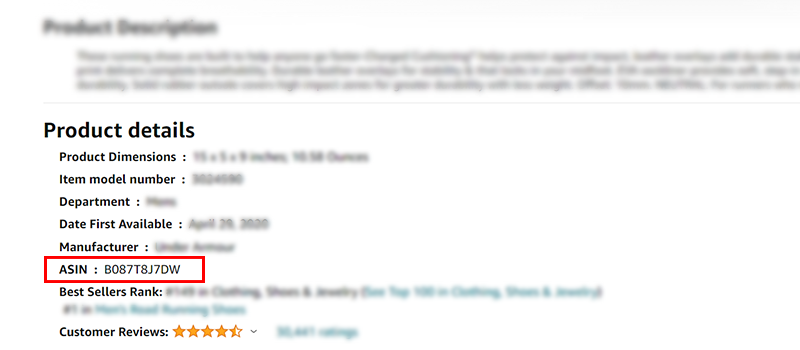
How to get an ASIN number from amazon?
To get an ASIN number from Amazon, follow these steps:
- Search for the Product: Use the Amazon search bar to find the product you’re interested in.
- Go to the Product Page: Click on the product listing to open its detailed product page.
- Locate the ASIN: Scroll down to the “Product Information” section. The ASIN is usually listed under “Additional Information” or “Product Details.”
- Check the URL: Alternatively, you can find the ASIN in the product page URL. Look for a 10-character string of letters and numbers that follows “dp/” in the URL.
By following these steps, you can easily find the ASIN number, which is essential for managing inventory and improving product searchability on Amazon.
Why Is Amazon ASIN Important?
Amazon ASINs serve the essential function of delivering accurate product searches and enhancing the customer experience. There are several reasons ASINs are relevant to buyers and sellers alike.
First of all, Amazon’s whole product catalog structure is based on ASIN numbers. Due to unique coding, sellers can accurately track their inventory. However, the vital part relates to potential customers finding the items they want to purchase.
With these unique identifiers Amazon can organize and index catalog pages. As a result, shoppers receive requested search results and browse products through multiple categories. Additionally, customers can type the product description or ASIN into the search box and find the exact product they are looking for. These combined allow Amazon to offer its customers an optimized shopping experience.
Mastering ASIN Lookup and Reverse ASIN Lookup Tools for Competitive Advantage
In today’s hyper-competitive Amazon marketplace, successful sellers understand that data-driven product identification is the foundation of profitable growth. ASIN lookup tools have evolved from simple search utilities into sophisticated competitive intelligence platforms that can transform your Amazon strategy.
The Power of Strategic ASIN Research
Every product on Amazon has a unique ASIN (Amazon Standard Identification Number) that serves as its digital fingerprint. Smart sellers leverage ASIN lookup tools to rapidly identify any product’s unique identifier by searching product names, UPCs, EANs, or even analyzing a product’s web address. This capability becomes essential when managing inventory across your Amazon store, creating new listing strategies, or conducting competitor analysis at scale.
Reverse ASIN lookup represents the next evolution in Amazon intelligence. These advanced platforms – including industry leaders like Jungle Scout, Helium 10’s Cerebro, and AMZScout – enable sellers to input any ASIN number and unlock comprehensive competitive data including keyword rankings, estimated sales velocity, traffic sources, and conversion optimization insights.
For brand owners and private label sellers, reverse ASIN lookup becomes particularly powerful when analyzing competitor performance and identifying opportunities for new ASIN creation or listing optimization. The ability to reverse-engineer successful products’ keyword strategies can dramatically accelerate your path to profitability.
ASIN Research Platforms:
- Jungle Scout: Comprehensive market research and product tracking
- Helium 10 (Cerebro): Advanced keyword and ASIN analysis
- AMZScout: Product research and competitor monitoring
These tools eliminate guesswork from product identification and provide the competitive intelligence needed to succeed among the large number of similar products flooding Amazon daily.
Amazon’s marketplace architecture allows multiple sellers to offer the same product under a single ASIN, creating opportunities for competitive pricing while maintaining catalog integrity. However, this system requires strategic understanding to maximize your advantage while avoiding costly policy violations.
The Critical Importance of Proper ASIN Management
Amazon’s catalog policy maintains strict standards against duplicate ASINs for identical products. When creating a new listing, sellers must utilize existing ASINs unless introducing genuinely unique products with distinct product identifiers (UPC, EAN, or GTIN). Violating this policy can result in listing suspension, inventory stranding, or complete seller privilege removal.
Smart sellers use ASIN lookup tools through Amazon Seller Central to verify product existence before investing in new inventory or creating listings. This proactive approach prevents costly mistakes and ensures optimal catalog placement from day one.
Brand Registry: Your Competitive Moat
Brand owners who leverage Amazon Brand Registry unlock powerful competitive advantages unavailable to regular sellers. Brand Registry provides enhanced control over your unique ASIN usage, access to A+ Content for richer product storytelling, and Brand Gating capabilities that restrict unauthorized sellers from your listings.
These tools don’t just protect intellectual property – they create sustainable competitive advantages that directly impact profitability. When your Amazon store maintains brand integrity through proper ASIN management, you build customer trust that translates into higher conversion rates and premium pricing power.
Strategic ASIN Management Best Practices:
Verification First: Always utilize ASIN lookup tools to confirm product existence before creating new listing entries in Amazon Seller Central
Identifier Accuracy: Ensure every product identifier (UPC, EAN, GTIN, ISBN) is correctly assigned to maintain catalog integrity
Brand Protection: Brand owners should immediately enroll in Brand Registry to control ASIN usage and access premium features
Competitive Intelligence: Regularly conduct reverse ASIN lookup analysis on top competitors to identify keyword opportunities and market gaps
Compliance Focus: Avoid creating multiple listings for identical products, as Amazon’s algorithms actively detect and penalize duplicate content
By implementing these advanced ASIN strategies and leveraging cutting-edge lookup tools, sellers can efficiently scale their Amazon store operations while building sustainable competitive advantages in an increasingly crowded marketplace. The combination of proper product identification, strategic use of unique identifiers, and proactive brand protection creates the foundation for long-term Amazon success.
What Is The ASIN Creation Policy
ASIN helps Amazon to index the catalog and display the exact product in the search results. Therefore, it’s crucial to identify and use the correct ASIN for your products as an Amazon seller. To ensure the best shopping experience for its customers, Amazon has an ASIN creation policy that keeps the catalog organized and prevents fraudulent listings.
Duplicate ASINs
According to Amazon, if you want to sell something in the catalog, you must match your product to the existing ASIN by creating an offer. Creating a new ASIN when the product already exists is prohibited.
Consequently, the sellers’ privileges may be temporarily suspended or permanently removed. However, if your product is not in the Amazon catalog, you need to create a new product ASIN for the product. We’ll cover this topic shortly.
Creating a new ASIN when the product already exists in Amazon’s catalog is prohibited and can result in your ASIN creation or selling privileges being temporarily suspended or permanently removed. In order to avoid creating duplicate ASINs, ensure that you always use the appropriate UPC, EAN, ISBN, ASIN, or JAN code when listing a product.
What is Amazon’s Product Variation Policy?
When Amazon sellers search for ASINs, they often encounter product variations or parent-child relationships. This “variation relationship” between products means they differ in attributes such as size, color, pattern, or other characteristics. Typically, the “parent product” is more general, while the “child product” is more specific. Variations are quite common as they allow shoppers to compare different options and choose the one they like the best.
Below is an example of product variation, in this case, the color.For each variant product, there are one parent ASIN and child variations. However, Amazon has several rules about listing parent-child ASINs to prevent misuse of variations. The Amazon ASIN variation policy prevents sellers from listing fundamentally different items under the same parent-child ASIN.
Using an Existing Amazon ASIN
If you are a retailer or a reseller, you can most likely use existing ASIN numbers for your product listings. As mentioned earlier, Amazon has a policy against duplicate ASINs, but using a current identifier for your product also has its perks. Matching to an existing product instead of creating a duplicate listing allows you to benefit from buyer interest and traffic for that product.
When you create a listing through your Seller Central account, you can search for existing ASINs by typing a product’s name, model number, UPC, EAN, or ASIN if you already know it.
Once you get the result, choose the listing under which you want to sell your products, and add the remaining information. If multiple ASINs appear, choose the one with the most product details.
However, when selecting the ASIN for your product, ensure it is an exact match. Otherwise, the customer’s order might not match the one they receive. As a result, they may leave negative reviews, which can be very damaging to your store’s performance rating.
How to Create A New ASIN in Amazon?
If your new item does not match an existing ASIN, you must create a new ASIN to include in the Amazon catalog. Typically, manufacturers and brand owners do this, but the chances are that you have found a new product with very little competition. That may also boost your chances of winning the Amazon Buy Box and increase your profits.
To create a new ASIN, navigate to the “Add Product” tool on your Seller Central account. Creating a new ASIN varies depending on the product category; in this case, we use adding new soaps as an example. Seller Central > Catalog > Add Products
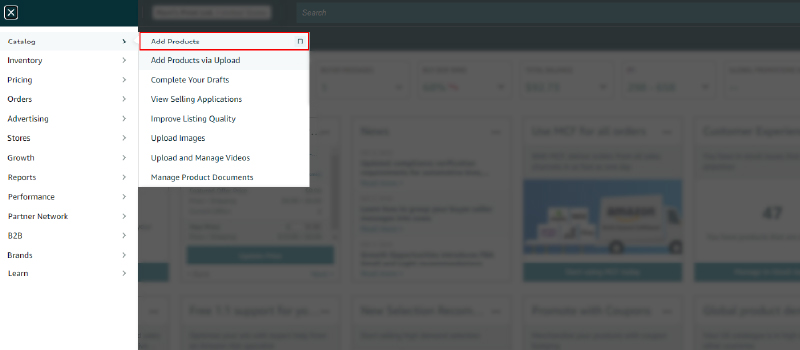
Choose that you want to add a product not sold on Amazon.
Select or search for the category.
First, there are the main categories. When you click on any type, other categories will open. This procedure goes on until the desired one appears.
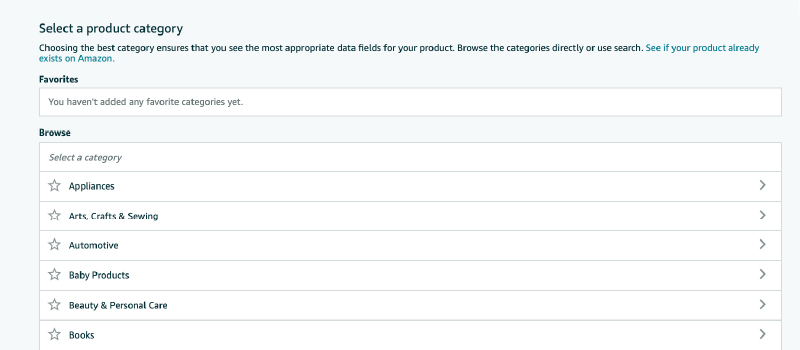
For instance: Beauty & Personal Care › Skin Care › Body › Cleansers › Soaps. Or, you can simply search for soaps.
Once you select the category, this page appears, and there are some required fields.
Fill in the blanks and just click on ‘Save and Finish.’
Once you submit the form, Amazon assigns your product an ASIN code and publishes a product details page. However, keep in mind that as you need to use existing ASINs, other sellers can now use the ASIN you just created.
How to add unique Amazon ASINs with UPCs, ISBNS, GTINs, and EANs?
If you’re creating a new ASIN, you’ll need to know your product’s GTIN (Global Trade Item Number). Amazon uses these 14-digit product identifiers to create and match the ASINS. They are located near your product’s barcode. If you do not know the codes, contact your manufacturer, or register a code if you are one.
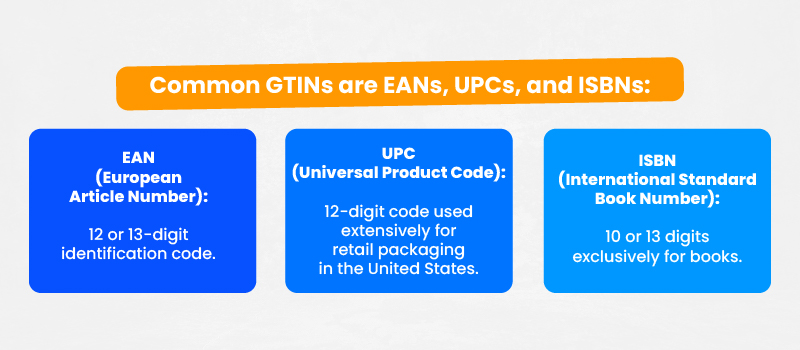
Amazon ASIN Requirements
Amazon has a few restrictions on adding an ASIN, especially if you are a new seller. Until you have established a proven sales record on Amazon, you can create only a limited number of new listings. In other words, as your Amazon sales increase, so does your capacity to create new ASINs. For this reason, you should prioritize your listing products to increase sales as quickly as possible.
FAQ | ASIN Number
An ASIN number is a unique code that identifies products in the Amazon catalog. It stands for Amazon Standard Identification Number and is a 10-character alphanumeric code that helps online shoppers find specific items on the Amazon website. This code is typically located near the UPC or EAN barcode associated with a product, and it allows customers to search for and compare items in the Amazon marketplace.
Getting an ASIN number from Amazon is a simple process. First, you need to find the product listing on their website. To do this, you can search for the product name or browse through categories until you find the item. Once you have located the item, find the ASIN in the product details section of the listing.
The average seller does not pay for an ASIN number. Instead, Amazon assigns each product in your catalog this code for free. However, if you are a high-volume listing seller with more than 100,000 products listed, you may be charged a flat monthly fee of $0.005 per ASIN. You’ll pay this fee and any FBA (Fulfillment by Amazon) storage fees together.
ISBN is an International Standard Book Number used to identify books and other publications. It consists of a 13-digit code specific to a book’s exact edition, including its language and publication cover artwork. ASIN stands for Amazon Standard Identification Number and is used solely by Amazon’s cataloging system. It identifies products within the Amazon marketplace and is typically associated with UPC or EAN barcodes.
You need an ASIN to list a product on the Amazon marketplace. Without an ASIN code, customers cannot find your product, and you won’t be able to sell it on Amazon. To obtain an ASIN number, search for the product listing you wish to include in your catalog and locate the associated 10-character alphanumeric code. This identifier is crucial for selling on Amazon and should be used consistently across your product listings.
Conclusion
Amazon ASIN is a crucial part of successful sales. Identifying a proper identifier allows your customers to find your products and sell more efficiently on Amazon.
However, a continuously growing product catalog means that Amazon has become an extremely competitive marketplace to sell on. Sourcing new products and creating entirely new ASINs is one way to avoid direct competition and increase the chances of winning the Amazon Buy Box. Unfortunately, this happens rarely, and success is not guaranteed. The best strategy to win your spot on the Buy Box is utilizing AI-powered repricing and increasing your profits with dynamic pricing.
Sign up now for a 15-day Free Trial and start outsmarting the competition with Eva.

